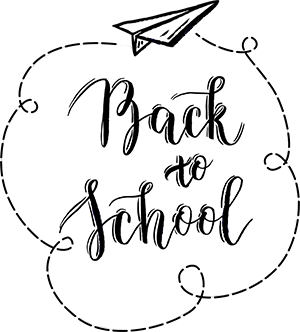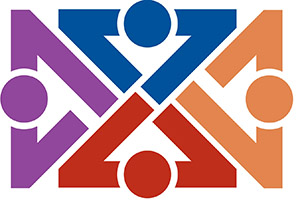As a new teacher, what do you need to know about managing student behavior?
Page 1: Creating a Classroom Behavior Management Plan
 Behavior management can be challenging for secondary content area teachers like Mr. Medina, regardless of their experience level. Although most behavioral issues are minor disruptive behaviors such as talking out of turn or being unprepared for class, occasionally students engage in more serious behaviors like defiance, verbal threats, or acting out.
Behavior management can be challenging for secondary content area teachers like Mr. Medina, regardless of their experience level. Although most behavioral issues are minor disruptive behaviors such as talking out of turn or being unprepared for class, occasionally students engage in more serious behaviors like defiance, verbal threats, or acting out.
disruptive behavior
Any action or verbalization that interferes with classroom instruction and impedes other students’ ability to learn.
The good news is that many disruptive behaviors can be minimized, or even avoided altogether, if teachers consistently implement comprehensive classroom behavior management. Getting an early start can help, too. The more time teachers spend addressing behavior management before school starts, the fewer behavior problems they are likely to contend with during the school year.
For Your Information
Disruptive behaviors can result in:
- Lost instructional time (according to some sources, up to 50%)
- Lowered academic achievement for the disruptive student and others
- Heightened teacher stress and frustration
- Decreased student engagement and motivation
- Inequitable and disproportional disciplinary referrals
- Greater teacher attrition
Before they can begin to create a comprehensive behavior management system, teachers must have an understanding of the key concepts related to behavior and of foundational behavior management practices. If you have not already done so, we recommend that you visit the first IRIS Module in the behavior management series to learn more about each of these all-important topics.
Once teachers feel comfortable with these key concepts and foundational behavior management practices, they are prepared to create a comprehensive classroom behavior management plan (subsequently referred to as a classroom behavior management plan). This plan should be thoughtful and intentional, and it should contain the core components described in the table below.
| Classroom Behavior Management Plan | |
| Core Components | Definition |
| Statement of Purpose | A brief, positive statement that conveys to educational professionals, parents, and students the reasons various aspects of the management plan are necessary |
| Rules | Explicit statements of how the teacher expects students to behave in her classroom |
| Procedures | A description of the steps required for students to successfully or correctly complete common daily routines (e.g., computer use, group work) and less-frequent activities (e.g., responding to fire drills) |
| Consequences | Actions teachers take to respond to both appropriate and inappropriate student behavior |
| Crisis Plan | Explicit steps for obtaining immediate assistance for serious behavioral situations |
| Action Plan | A well-thought-out timeline for putting the classroom behavior management plan into place. It includes what needs to be done, how it will be done, and when it will be accomplished. |
As they develop these components, teachers should give them proper and serious consideration in order to minimize the need for subsequent revision, as well as to avoid the need to reteach them to their students in the event they were not clearly articulated in the first place. That said, the components of a behavior management plan are not written in stone. They can and should be revised or adjusted as circumstances dictate.
Listen as Lori Jackman discusses how a classroom behavior management plan can help a teacher enter the classroom with confidence. Next, Melissa Patterson talks about the importance of being flexible and making changes to the plan as needed.

Lori Jackman, EdD
Anne Arundel County Public Schools, retired
Professional Development Provider
(time: 0:42)
Transcript: Lori Jackman, EdD
For an individual teacher who’s just been hired to be able to walk in with a plan of what are you going to do when a kid misbehaves, or what are you going to do for the kids who behave, and what are your expectations, and how are you going to teach it to the kids, so to be able to walk in with that that first day kind of helps them cross the threshold of their classroom a bit more confident than the teacher who’s, like, “I’ll figure it out. I’ll figure it out,” which is what I was told in my teacher prep programs. “Don’t worry. You’ll figure out that discipline thing once you’re there.” I think it gives them an air of calmness when they stand up and introduce themselves to their students those first days of “I’m your teacher, and here’s the plan for helping us all behave.”
Transcript: Melissa Patterson
I think the biggest piece of advice is to have that behavior management plan, but then to make sure that you leave room for flexibility. Because you can create the best plan but then go in and find that it’s not going to work in that specific classroom. So leaving room for flexibility, understanding that things change at the drop of a hat, and that you’re going to have to make changes. But I think the flexibility has to be there for student input as well. You can create a plan, but if you go in and you set all of these hard, concrete rules you’re going to have a lot of student pushback. But if you involve students in creating their environment, you’re going to have a lot more success when the students feel like they have some kind of control over their own space.
Research Shows
Students whose teachers implement the core components of a classroom behavior management plan exhibit less disruptive, inappropriate, and aggressive behavior than do students whose teachers do not use such practices.
(Alter & Haydon, 2017; Mitchell et al., 2017; Simonsen et al., 2015)
Returning to School
 Students returning to in-person learning may initially engage in disruptive behaviors more frequently and with more intensity than is typical following summer break. In addition to a slide in academic skills, some students may exhibit decreased rates of appropriate school-related social skills. Others may be enthusiastic and overly social and fail to immediately comply with the structures and conventions required in high-achieving content-area classrooms. To help secondary students successfully navigate their initial reentry to more traditional in-person classrooms teachers can:
Students returning to in-person learning may initially engage in disruptive behaviors more frequently and with more intensity than is typical following summer break. In addition to a slide in academic skills, some students may exhibit decreased rates of appropriate school-related social skills. Others may be enthusiastic and overly social and fail to immediately comply with the structures and conventions required in high-achieving content-area classrooms. To help secondary students successfully navigate their initial reentry to more traditional in-person classrooms teachers can:
- Welcome and greet students with enthusiasm and genuine concern for their well-being.
- Teach students social emotional learning (SEL) skills (e.g., responsible decision making, identifying emotions).
x
social emotional learning (SEL)
A process through which students gain the knowledge and skills to develop self-control and self-awareness in order to manage emotions, build healthy identities, and maintain positive relationships.
- Make additional time available to individual students for guidance and emotional support.
- Promote high expectations but recognize that increased time will be needed to remind students of appropriate behaviors.
- Teach students organizational and study skills strategies to help promote academic success, which in turn leads to less disruptive behavior.
- Provide prompts for appropriate behavior.
Activity
![]() Activity Alert! As you work through this module, you will have the opportunity to put each of these components into action. Every time you see a purple Activity box with the laptop icon displayed on the right, you will be able to create a component of your classroom behavior management plan and save it in the Behavior Plan Tool. When you have finished the module, you’ll be able to print out your plan.
Activity Alert! As you work through this module, you will have the opportunity to put each of these components into action. Every time you see a purple Activity box with the laptop icon displayed on the right, you will be able to create a component of your classroom behavior management plan and save it in the Behavior Plan Tool. When you have finished the module, you’ll be able to print out your plan.
High-Leverage Practices
 The practices highlighted in this module align with high-leverage practices (HLPs) in special education—foundational practices shown to improve outcomes for students with disabilities. More specifically, these practices align with:
The practices highlighted in this module align with high-leverage practices (HLPs) in special education—foundational practices shown to improve outcomes for students with disabilities. More specifically, these practices align with:
HLP7: Establish a consistent, organized, and respectful learning environment.
HLP8: Provide positive and constructive feedback to guide students’ learning and behavior.
HLP9: Teach social behaviors.
HLPs, which all special education teachers should implement, are divided into four areas: collaboration, assessment, social/emotional/behavioral practices, and instruction. For more information about HLPs, visit High-Leverage Practices in Special Education.
